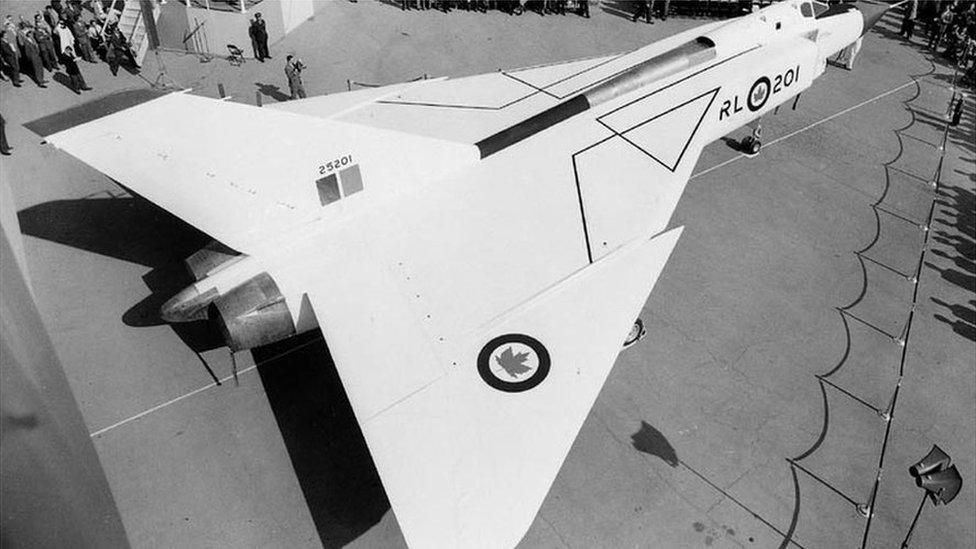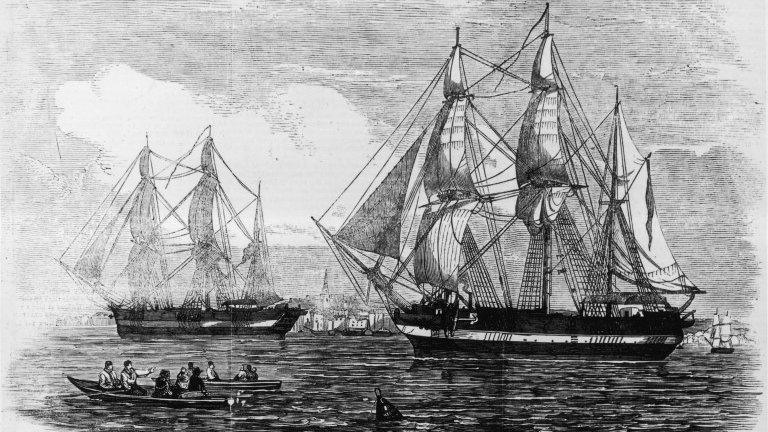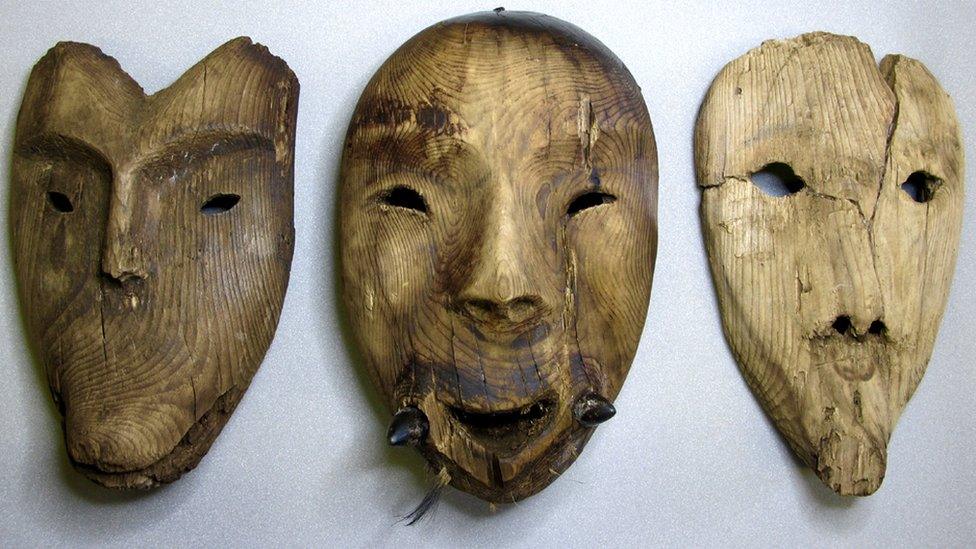Underwater hunt begins for lost Avro Arrow models
- Published

The Avro Arrow
A Canadian search-and-recovery mission has been launched to recover Cold War-era supersonic interceptor jets from the depths of Lake Ontario.
Over 60 years ago, nine free-flight Avro Arrow models were launched into the Great Lake to test their flight design.
The famed CF-105 Arrows were considered highly advanced when Canada abruptly cancelled the Avro programme in 1959.
Searchers are using advanced sonar technology in the underwater hunt.
Organisers believe that technology is what will make this mission a success where previous attempts to find the models have failed.
Kraken Sonar, a marine technology company from St John's in Newfoundland and Labrador, will be using the same sonar that was deployed in the hunt for Sir John Franklin's lost ships in Canada's far north.
One ship, HMS Erebus, was discovered in 2014 by a Canadian expedition team. The Victorian-era vessel vanished in the mid-19th Century during an ill-fated search for the fabled Northwest Passage.
The sonar device was deployed on Friday morning from Point Petre, 230km (140 miles) east of Toronto, and where the free-flight Avro Arrow models were launched into Lake Ontario in the 1950s.
The Avro Arrow, developed by A.V. Roe (Avro) Canada, was the only supersonic interceptor jet ever to be designed and built in Canada.
The most recent hunt for the lost models first began around a year ago as the personal mission of John Burzynski, president of Osisko Mining.
He is also leading the OEX Recovery Group Inc., which is behind the "Raise the Arrow" project. The search is funded by a group of private mining and financial industry sponsors.

Osisko Mining CEO John Burzynski is behind the Avro Arrow search
Mr Burzynski says the search began with the idea of bringing back a piece of lost Canadian history.
"The Avro Arrow programme is still very popular and very well known amongst Canadians," Mr Burzynski told the BBC.
The programme was cancelled suddenly on 20 February 1959, in part over cost concerns, a decision that remains controversial to this day.
Over 30,000 employees and sub-contractors lost their jobs. A.V. Roe (Avro) Canada soon ceased operations.
The cancellation reverberated throughout the country's aerospace industry, causing a so-called "brain drain" of Canadian talent.
Many engineers went on to work in the US and UK, hired by companies like Lockheed and Boeing, and organisations like NASA.
"Many of them were eventually responsible for the space programmes and lunar landing programmes," Mr Burzynski said. "It tugs at the Canadian psyche of what could have been in Canada."
The search team will be surveying around 100 square kilometres (39 square miles) of the nearly 19,000 square kilometre Lake Ontario, one of the five Great Lakes of North America.
The models being searched for are one-eighth scale replicas and were part of the final flight design test work being done prior to the production of the famed fighter jet.
Mr Burzynski says the bottom of the vast lake is filled with objects, from old military artillery to sunken schooners.
The high resolution sonar will help the searchers to distinguish one object from another, where previous searchers "wouldn't know if they were looking at a tree trunk or a rocket".
If the month-long recovery mission is successful, the models will find new homes at the Canada Aviation and Space Museum and the National Air Force Museum of Canada.
- Published2 October 2014

- Published19 May 2017
